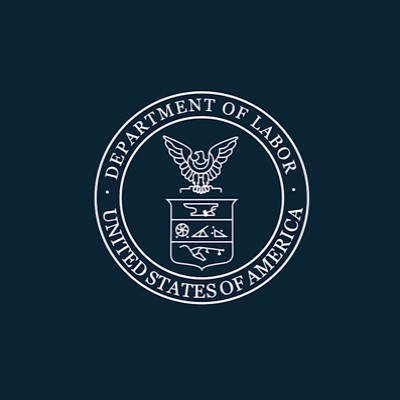The Economic Tightrope: Balancing Anxiety and Opportunity in a Shifting Landscape
June 25, 2025, 4:32 am

Location: United States, District of Columbia, Washington
Employees: 10001+
Founded date: 1913
The American economy is a complex tapestry, woven with threads of hope and fear. As June 2025 unfolds, consumers find themselves on a precarious tightrope, balancing optimism against a backdrop of uncertainty. The latest reports reveal a significant dip in consumer confidence, with assessments of the current economic situation plummeting by 6.4 points to 129.1. This decline signals a growing unease among Americans, as tariffs and unpredictable policies loom large in their minds.
Tariffs, like dark clouds on the horizon, cast a shadow over personal finances. The aggressive trade policies initiated by the Trump administration have stirred anxiety, raising questions about the future of jobs and the economy. The fear of recession, once a distant worry, now creeps closer, as consumers express heightened concerns about the next twelve months. The Conference Board's survey indicates that the expectations index—comprising business conditions, job prospects, and future income—has weakened across the board. It’s a storm brewing, and many are bracing for impact.
Despite these clouds, the labor market remains a silver lining. The U.S. added 139,000 jobs in May, a testament to resilience. Unemployment sits at a historically low 4.2%. Yet, the hiring pace has slowed, a sign that employers are treading carefully amid tariff-related uncertainties. Consumers are caught in a whirlwind of mixed signals. On one hand, jobs are being created; on the other, the fear of losing them looms large.
Inflation, that persistent specter, continues to haunt consumers. While concerns dipped slightly in June, prices remain a pressing issue. The latest government report shows consumer prices rising to 2.4%, with core prices climbing 2.8% for three consecutive months. This inflationary pressure is a double-edged sword, squeezing household budgets while complicating the economic landscape. The Conference Board notes that references to geopolitics and social unrest have increased, though they remain secondary to economic concerns. The world feels unstable, and consumers are feeling the tremors.
In the face of such uncertainty, individuals facing layoffs must navigate their own economic tightrope. Losing a job can feel like a free fall, but there are ways to regain footing. The first step is emotional processing. Acknowledging feelings of anger, sadness, or even relief is crucial. It’s a necessary pause before moving forward.
Next, a thorough review of one’s financial situation is essential. Understanding current expenses and identifying areas to cut back can provide a lifeline. Severance packages, if available, offer temporary relief, but they are not a long-term solution. Applying for unemployment benefits promptly can help bridge the gap. It’s a small safety net in a turbulent time.
Yet, it’s vital to remember that self-worth extends beyond job titles. Creating a “non-financial asset list” can help individuals recognize their value beyond employment. Skills, relationships, and personal qualities are all part of the equation. This perspective shift can bolster self-esteem during a challenging period.
Adjusting spending habits becomes paramount after a layoff. Every dollar must be treated with care. Budgeting strategies, like giving each dollar a job, can help maintain financial stability. It’s about being strategic, not restrictive. Cutting back doesn’t mean sacrificing joy; it’s about finding balance.
Credit cards can be tempting during tough times, but they can also become anchors. Relying too heavily on credit can lead to deeper financial woes. Instead, focusing on reducing expenses while searching for a new job is a wiser approach.
Community resources can provide additional support. Food banks and hardship programs can ease the burden of necessary bills. Many communities offer assistance, and seeking help is a sign of strength, not weakness.
As individuals embark on their job search, having a plan is crucial. Assessing professional goals and updating resumes to reflect future potential can make a significant difference. Networking, both online and in-person, can open doors to new opportunities. Online certifications can enhance skills and make candidates more appealing.
Establishing a routine is another key element. A structured day can provide a sense of normalcy and purpose. Incorporating job applications, exercise, and regular meals can help maintain mental health. Isolation can be a pitfall; leaning on a support system is essential.
The economic landscape is fraught with challenges, but it also holds opportunities. Consumers and job seekers alike must navigate this terrain with resilience and adaptability. The road ahead may be rocky, but with careful planning and a proactive mindset, it’s possible to find stability amid the chaos.
In conclusion, the American economy is a balancing act. Consumers are grappling with fears of recession while navigating a labor market that still offers hope. Those facing layoffs must approach their situation with a clear plan and a focus on self-worth. The journey may be daunting, but with the right tools and mindset, it’s possible to emerge stronger on the other side. The tightrope may sway, but with balance and determination, it can be traversed.
Tariffs, like dark clouds on the horizon, cast a shadow over personal finances. The aggressive trade policies initiated by the Trump administration have stirred anxiety, raising questions about the future of jobs and the economy. The fear of recession, once a distant worry, now creeps closer, as consumers express heightened concerns about the next twelve months. The Conference Board's survey indicates that the expectations index—comprising business conditions, job prospects, and future income—has weakened across the board. It’s a storm brewing, and many are bracing for impact.
Despite these clouds, the labor market remains a silver lining. The U.S. added 139,000 jobs in May, a testament to resilience. Unemployment sits at a historically low 4.2%. Yet, the hiring pace has slowed, a sign that employers are treading carefully amid tariff-related uncertainties. Consumers are caught in a whirlwind of mixed signals. On one hand, jobs are being created; on the other, the fear of losing them looms large.
Inflation, that persistent specter, continues to haunt consumers. While concerns dipped slightly in June, prices remain a pressing issue. The latest government report shows consumer prices rising to 2.4%, with core prices climbing 2.8% for three consecutive months. This inflationary pressure is a double-edged sword, squeezing household budgets while complicating the economic landscape. The Conference Board notes that references to geopolitics and social unrest have increased, though they remain secondary to economic concerns. The world feels unstable, and consumers are feeling the tremors.
In the face of such uncertainty, individuals facing layoffs must navigate their own economic tightrope. Losing a job can feel like a free fall, but there are ways to regain footing. The first step is emotional processing. Acknowledging feelings of anger, sadness, or even relief is crucial. It’s a necessary pause before moving forward.
Next, a thorough review of one’s financial situation is essential. Understanding current expenses and identifying areas to cut back can provide a lifeline. Severance packages, if available, offer temporary relief, but they are not a long-term solution. Applying for unemployment benefits promptly can help bridge the gap. It’s a small safety net in a turbulent time.
Yet, it’s vital to remember that self-worth extends beyond job titles. Creating a “non-financial asset list” can help individuals recognize their value beyond employment. Skills, relationships, and personal qualities are all part of the equation. This perspective shift can bolster self-esteem during a challenging period.
Adjusting spending habits becomes paramount after a layoff. Every dollar must be treated with care. Budgeting strategies, like giving each dollar a job, can help maintain financial stability. It’s about being strategic, not restrictive. Cutting back doesn’t mean sacrificing joy; it’s about finding balance.
Credit cards can be tempting during tough times, but they can also become anchors. Relying too heavily on credit can lead to deeper financial woes. Instead, focusing on reducing expenses while searching for a new job is a wiser approach.
Community resources can provide additional support. Food banks and hardship programs can ease the burden of necessary bills. Many communities offer assistance, and seeking help is a sign of strength, not weakness.
As individuals embark on their job search, having a plan is crucial. Assessing professional goals and updating resumes to reflect future potential can make a significant difference. Networking, both online and in-person, can open doors to new opportunities. Online certifications can enhance skills and make candidates more appealing.
Establishing a routine is another key element. A structured day can provide a sense of normalcy and purpose. Incorporating job applications, exercise, and regular meals can help maintain mental health. Isolation can be a pitfall; leaning on a support system is essential.
The economic landscape is fraught with challenges, but it also holds opportunities. Consumers and job seekers alike must navigate this terrain with resilience and adaptability. The road ahead may be rocky, but with careful planning and a proactive mindset, it’s possible to find stability amid the chaos.
In conclusion, the American economy is a balancing act. Consumers are grappling with fears of recession while navigating a labor market that still offers hope. Those facing layoffs must approach their situation with a clear plan and a focus on self-worth. The journey may be daunting, but with the right tools and mindset, it’s possible to emerge stronger on the other side. The tightrope may sway, but with balance and determination, it can be traversed.
